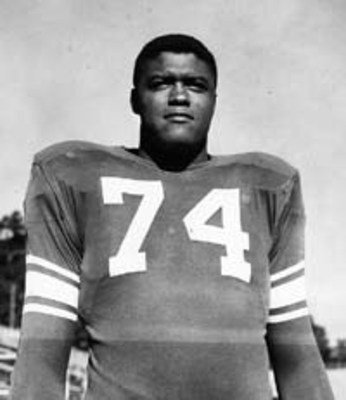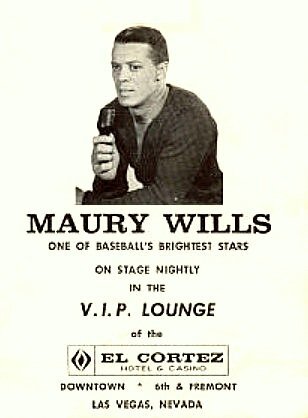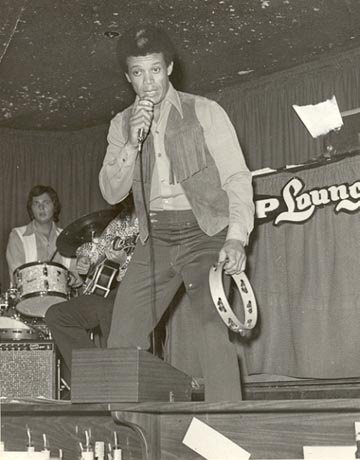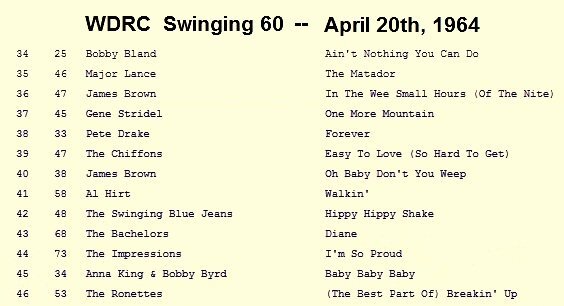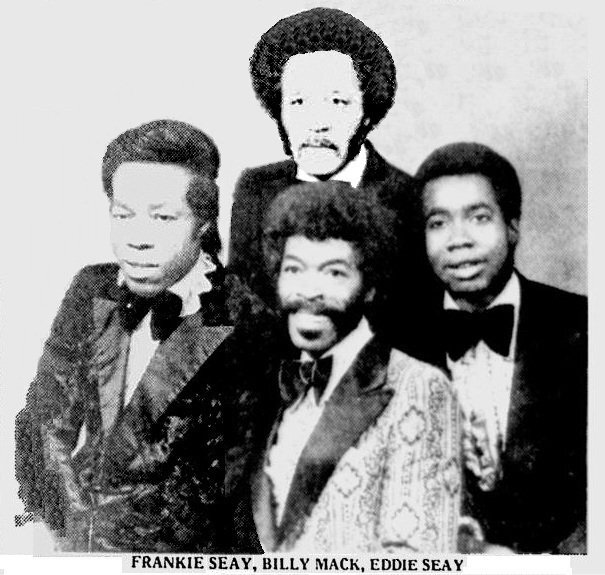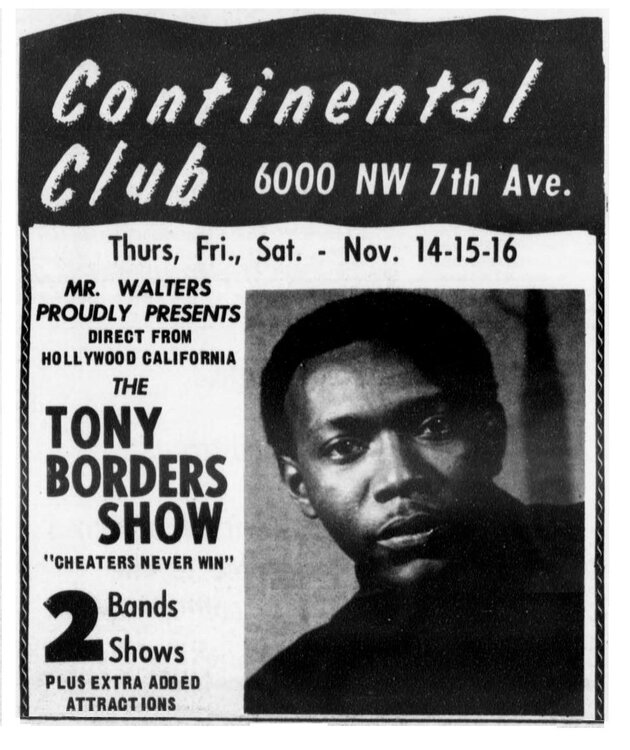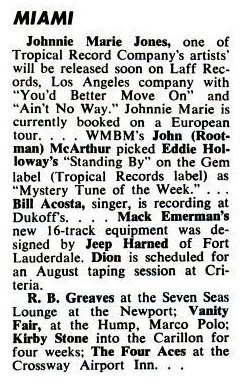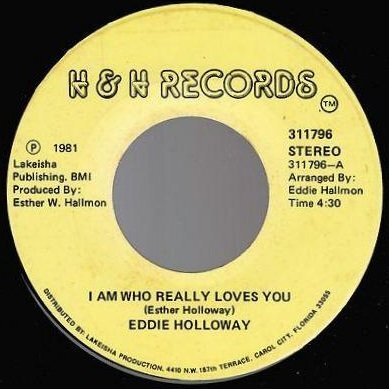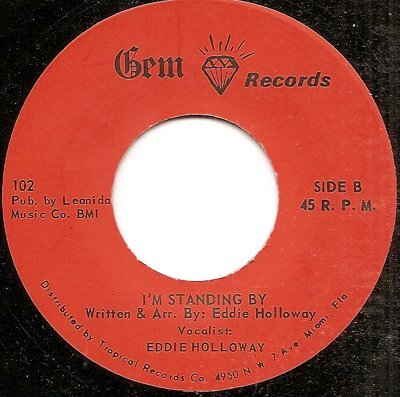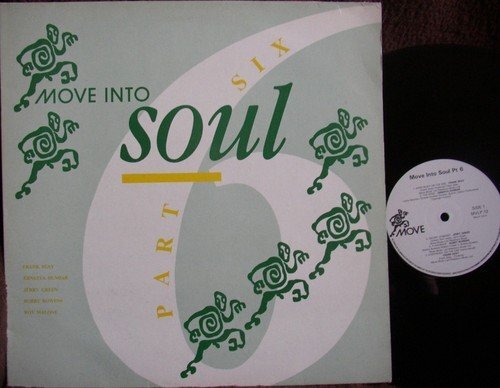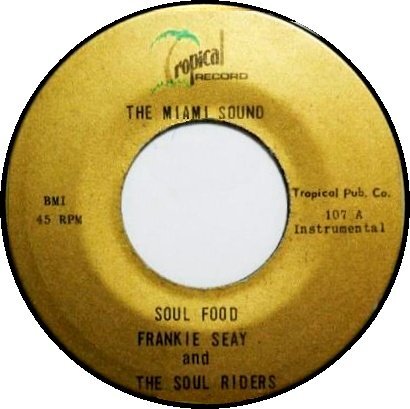-
Posts
7,237 -
Joined
-
Last visited
-
Days Won
45 -
Feedback
0%
Content Type
Forums
Event Guide
News & Articles
Source Guidelines and Help
Gallery
Videos Directory
Source Store
Everything posted by Roburt
-
-
-
Just thought I'd ask if people could add to the list of sportsmen who took up soul singing. I guess the most famous ones are Rosey Grier, Cassius Clay & Joe Frazier though the likes of Maury Wills, Will Chamberlain, Don Drysdale, Eddie 'Too Tall' Jones, Justin Fashanu & Freddie Trueman (well maybe not the last one) also tried their hand at both games.
-
Aren't the New Mastersounds still around & active in the Leeds area ?? They put out some great funky tunes over the last 10 years & have their own studio. .............. https://uk.myspace.com/newmastersounds See if you can get them interested .... I talked to them about 5 years ago about undertaking recording sessions & a UK tour with Lou Ragland. They were very interested till their guitar player realised that Lou always played guitar as well as singing .... he went off the idea when he learnt that.
-
Most 'old school' US soul singers have long ago been excluded from American recording studios, so I wouldn't be too suprised if one was willing to get involved (if they had the time & were over here in the UK anyway).
-
Not Miami related at all ............. but part of a Hartford radio stn WDRC chart from April 1964 ......... ... Gene Stridel's current 45 was at No.37 (lifted from his Columbia LP) .............. He shared the chart with funky acts such as the Swinging Blue Jeans & the Bachelors. It seems Gene passed away in 1973, so his time in Florida was cut short (see last post). Info on his group, the Striders ........... https://www.uncamarvy...s/striders.html
-
Gene Stridel started out in the R&B group the Striders as far back as the mid to late 40's. The group were recording from an early date, both in their own right ("Pleasin You" -- Capitol -- Nov 1948) and as backing singers on other artists hits (Savannah Churchill's "Walking By the River" -- RCA 45 -- Nov 52). In March 1950, both Savannah Churchill & the Striders were playing gigs in the UK (at the Colony & Astor in London). In March 51, they were back in the UK this time playing the Palladium in London. Things seemed to have tailed off for the group by the end of the 50's (no doubt the likes of Robb can shed some light on that). By 1962, Gene had gone solo and was cutting for Verve. By Feb 64, John Hammond had signed him to Columbia and was trying to reinvent Gene as a jazzy supper club singer (hence the 'This Is Gene Stridel' album). Gene soon moved on to record for the likes of Atlantic in the late 60's (after the label bought the master of "The Zebra" from independent producer Irving Spice). Live performance wise, Gene seemed to base himself to the north of New York from 1962 to 1964 (in Hartford). Due to his local popularity, some of his 45's charted on local Hartford pop radio station WDRC during that period (his "One More Mountain" made the stn's Top 40 in April 64). By 1965, he had relocated to LA and was playing gigs out there plus in Vegas. In 1966, he teamed up with Playboy and went around the US playing in many Playboy Clubs. He played the Playboy Club in Baltimore in 1968. He was on the 'Edie Adams' TV show in Seattle in May 69 (though I doubt video has survived of that as I believe it wasn't networked at that time). He seems to have relocated once again at the end of the 60's (or at the beginning of the 70's) to Miami .... probably after securing an engagement at a Miami Beach Hotel club. He soon hooked up with local record people and was signed to a deal with Mercede by 1971. No doubt he played gigs at both 'white' Miami Beach venues and 'black' clubs in the city .... trouble is he doesn't seem to have gotten many 'show revues' in local Florida newspapers back then. No doubt there are ads for a couple of his live appearances in those same newspapers, but they don't show up when 'searching' their content. So, for club ads, its very much a case of 'pot luck' if I come across one or not. Till now, I haven't been lucky in that respect.
-
More potential vocalist who will be in the UK next February ............. .............. TV star and legendary producer David Gest will make history, by bringing an all-star line-up of Soul and Motown artists to The Royal Court Theatre, Liverpool for five dazzling performances of David Gest's Legends of Soul Spectacular. He will assemble one of the largest gatherings of the biggestselling and most-revered rhythm and blues artists of all time, who have collectively sold more than 100 million records worldwide. He will host the musical extravaganza, which runs from Wednesday 6th until Saturday 9th February 2013. Gest said: "I am thoroughly excited about performing once again in Liverpool. "Our last two shows at The Liverpool Philharmonic Hall were record-breaking and we plan to break even that record at The Royal Court Theatre. "The renovations at The Royal Court have made this theatre the in place for all music artists to perform. "And we have a lot of surprises planned for our Liverpool audience. Scousers know how to party and since I consider myself an honorary Scouser, we're going to start the New Year off with the biggest soulful party they've ever seen!" The glittering bill includes Percy Sledge, Sheila Ferguson, Peabo Bryson, Candi Staton, Billy Paul, Martha Reeves, Shirley Alston Reeves, Martha Wash, Kim Weston, Deniece Williams, Eddie Floyd, Dorothy Moore, GC Cameron and Brenda Holloway.
-
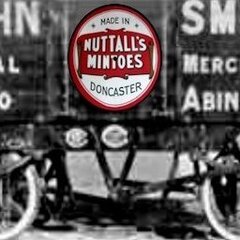
What's The Rarest Soul Record, On A Ja Label?
Roburt replied to dthedrug's topic in Look At Your Box
Jimmy James' original WIRL Jamaican 45 recording isn't that rare ............ ... well I don't think it is as I have 2 copies of the 45 myself. -
Most towns / cities across the UK have 'home' recording studios, usually set up by local musicians. Do a web search for ones near you and give them a ring. They usually charge little for a short session as their equipment lies idle much of the time. The guys who run such studios have access to decent musicians though whether they can play soulfully is another matter. You'll also probably have to accept electronic brass & string effects. You'd also have to find a good soulful vocalist yourself unless you drop really lucky. Need to sort the song / tune out in avance & get the guys involved to learn the piece, otherwise musch studio time (which will be charged) can be wasted. Many 'visiting' US singers would no doubt be willing to 'give it a go' for a smallish fee (Spyder Turner, Daryll Grant) but you would have to contact them in advance, send em the song to learn & have everything set up (studio wise) for the short 'spare-time' slot they would have when here in the UK. Getting such a vocalist to sing on the track would of course add much kudos to the finished article. I know Daryll Grant from his days singing in a cover group in Vegas casinos (back around 10 years ago). He can sing most things well ... but you would need to know a bit about music (or get someone involved who does), to ensure the arrangement was worked out so as to be in the right key for the singer selected.
-
Frankie Seay was in trouble in the 80's when he undertook some live gigs .......... ... this was because he was accepting live bookings under the name of one of the many versions of the Ink Spots that were performing across the States back then ........... The original Ink Spots rhythm-and-blues quartet has not been together since the 1930s, and all four of those musicians were dead by the 70's. But the many versions of the old group refused to fade away. The original breakup of the Ink Spots in the 40's had led to more, not fewer, neo-Ink Spo groups. ``In the last year, we have sent letters to 10 other groups in Florida asking them to stop using the name,`` said Mili Della Lilley in 1985. As president of the Hanover Group entertainment agency in Fort Lauderdale and personal agent for Jim Nabbie`s Ink Spots Inc. she insisted that she managed the single honest-to-goodness, one-and-only, real-McCoy Ink Spots. Or at least the closest thing available at that time. Jim Nabbie`s Ink Spots filed a lawsuit against some other Ink Spots who have been performing around FLORIDA. Named as defendant in a Broward Circuit Court civil suit was Frank Seay, leader of a group that at various times has called itself Ink Spots `82, the Fabulous Ink Spots, the Great Frank Seay and His Ink Spots, Ink Spots `81, The Ink Spots, and the Great Frank Seay and the Super Spots. The situation was very confusing. Even Frankie's attorney, Jerome L. Tepps, has had to take a crash course in music history to play this particular game of To Tell The Truth. ``I think Jim Nabbie is one of the original Ink Spots,`` Tepps said. ``My understanding is that he`s as close as anybody can be to being the real thing while being alive.`` ``He`s not one of the original four,`` Lilley agreed. ``They`re all dead. They would be in their 80s if they were alive.`` According to Lilley, Deek Watson, who was one of the originals, brought Jim Nabbie into the group to replace Bill Kenny, whose mezzo soprano voice was considered the distinctive signature of the group. Kenny made the group famous for such big hits as If I Didn`t Care, We Three, and I Don`t Want to Set the World on Fire. But even Kenny was not an original Ink Spot. The first four members, who began singing in the late 1930s, were Watson, Jerry Daniels, Hoppy Jones and Charlie Fuqua. The Ink Spots have always been abundant in splinter groups and imitations. According to a United Press International news story in 1966, at least 10 groups by that name were performing at that time in North America. The group Lilley represents is composed of Nabbie, 65, who lives in Atlanta; King Drake, 64, Palm Beach; and Harold Winley, 52, and Sonny Hatchet, 53, both of whom live in New York. According to Tepps, Frank Seay`s Ink Spots have agreed to drop their name, meaning Tepps probably will not have to pursue his lawsuit. In addition to taking bookings under the name of Frank Seay & Contact High, it seems that around the mid 1970's, his group also started going out as the Ink Spots. Whilst they got good reviews under that name & attracted an 'older audience', they would perform more contemporary songs if faced with a younger audience. Francie & the group sought to legitimise themselves (as the Ink Spots) by stating that Frankie (& his brother Eddie) were the nephews of 1960's Ink Spot Joe Boatner and that they had earlier performed with Joe. They also had Billy Mack as a group member at times and he had also been in a few 'incarnations' of the Ink Spots at times. The line up of Frankie's Ink Spots in 1975 was Frank & Eddie Seay, Billy Mack and Joseph Palmer but members came & went right through to the mid 80's. In 1975, the group were being booked right across Florida with one big gig being a week long engagement at the Sheraton Cyprus Gardens in Winter Haven (between Tampa & Orlando). Frank only sang lead on a few of the group's songs, Billy Mack & Joseph Palmer having voices more suited to the old Ink Spots favorite tracks. Frank sang lead on more of the contempoaray songs the group performed. Eddie Seay mainly played guitar for the group (though he did contribute some backing vocals). Other musicians that they toured with (as their backing band) included Oscar Williams & Leon Butler. I believe that some of this whole ensemble had been performing with Frankie for some years by 1975. It seems unlikely that Joe Boatner approved of Frankie's version of the group. However as Joe had been performing (with his own incarnation of the Ink Spots) up in Maine & Canada since at least the late 40's and was still securing regular bookings for the group through the mid 70's and into the early 80's. Here's a photo of Frankie's group in 1975 (Joseph Palmer being the guy at the back, with the other three as named underneath) .... Anyone know if THIS Eddie Seay is the guy who had 45's out on Imperial, PPI ("Look My Way") & Cyclone ??
-
Spotlight Booking Agency,a division of Tropical Records, were looking for talent in October 1970. The new agency was already handling Eddie Holloway, Human Race, Joe Simmons and Billy Smith.
-
Soul harmony singing seems to be a dying art .... young performers don't seem to have the patience to hone such skills. ........... a sad loss indeed. When TV shows such as X Factor can launch crap singers on careers & yet guys such as those above can't get into a recording studio, it shows how far out of whack that the record biz is now.
-
Yep, there's a label scan of that 45 (JTWYA) included in post #5 of this thread (though he's credited just as Eddie Taylor on the label).
-
Tony Borders .... direct from Hollywood .......... ..... so not from Quinvy Studios, Muscle Shoals, Alabama at all ....
-
He 'claimed' to be Johnny Taylor's brother BUT Johnny never accepted the claim by all accounts.
-
RIP Frankie .................
-
There's more info on Frankie Seay with this youtube video .......... In 1975/ 76 Frankie was playing regular gigs at the Wreck Bar in Castaways Hotel (Nth Miami Beach). His group was called Frankie Seay and the Contact High at that time. Unfortunately Frankie passed away late last month. https://www.youtube.com/watch?v=ico0mgNEiC4
-
Another Johnnie Marie 45 outing ............
-
More action for Tropical Records in August 70 ..... Johnnie Marie Jones was one of the backing singers on Betty Wrights 1974 LP 'Danger High Voltage'.
-
-
Gem Records was also a Tropical subsiduary label ............. Eddie Holloway had a good 45 out on the label in August 1970 ..... The 45 must have been 'flipped' as the B side was being promoted by local radio jocks that month.
-
An earlier Rufus Beacham 45 (on Scepter) ...............
-
-
Another sought after Frank Seay Tropical 45 ......... some of his 60's tracks have ecaped on CD in the last 10 years ....



